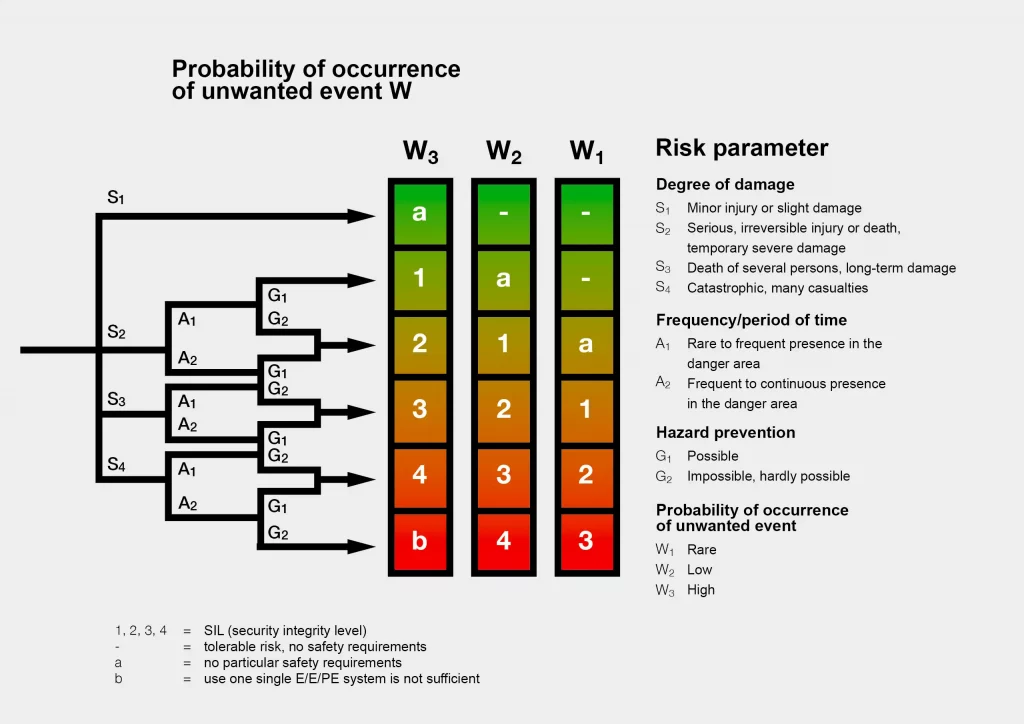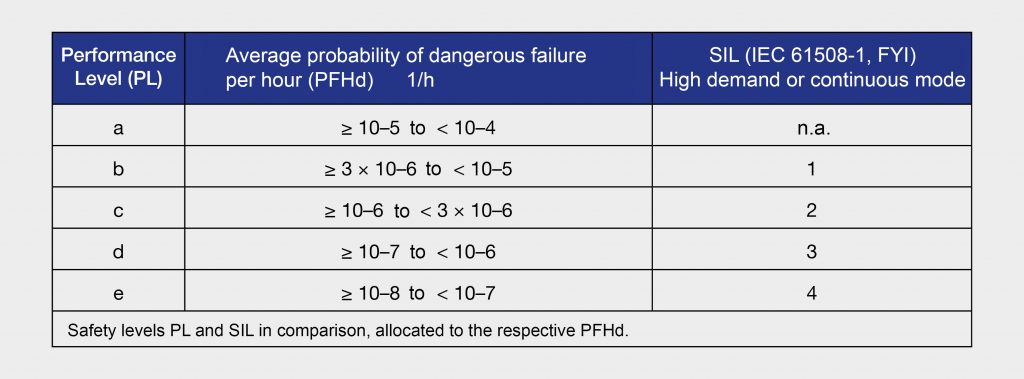
Force sensors are becoming increasingly important in the set-up of machines, plants, and engines, as they allow us to detect critical or dangerous situations like overloads. Therefore, they help both protecting people and materials and making processes and products safer and more efficient. Force sensors can be used in various applications.
Force sensors contribute significantly to the safety of machines and plants. However, the so-called functional safety (FuSa) additionally includes a systemic examination and assessment of the required safety levels. Functional safety is therefore gaining importance in the industry.
Safety levels are assessed according to safety standards EN 13849 or EN 61508. EN 61508 is an overall functional safety standard. There are also specific standards for individual branches, such as mechanical engineering (EN 62061), medical engineering (EN 60601), electric drives (EN 61800), and process industry (EN 61511). EN 13849, on the other hand, is the safety standard for machinery control systems.
The decision about which basic safety standard (EN 13849 or EN 61508) is to be used to categorise machines or plants eventually lies with their developers and engineers. The fact that there are two overlapping safety standards, which are both used to assess safety, is confusing users.
Both standards use different methods and categories:
Unfortunately, the not so recent attempt to merge the two different approaches failed.

The illustration shows a chart used for evaluating risk and required safety level according to EN 61508, based on SIL.
Any component which is used in a machine or plant certified in accordance with EN 13849 or EN 61508 must also adhere to the respective safety standard.
A component’s functional safety is part of its product features. It requires extensive analysis and documentation, as early as during the development and construction stage. This allows us to determine the probability of failure, which is then categorised according to the required safety standards. These standards distinguish between failures and dangerous failures.
A component’s probability of failure and other indicators derived from that probability are called safety data.
Typical safety data are:
FIT (Failure In Time)
Measuring unit for failure rates of electronic components (1 FIT = 1 x 10-9/h)
FIT is the basis for calculating other safety data:
1 FIT = 1 Failure in Time = 1 dangerous failure in 10^-9 operating hours or 114.155 years.
PFHd (Probability of dangerous failure per hour)
Probability of dangerous failure per hour
PFHd (Probability of dangerous Failure per Hour)
Probability of dangerous failure per hour
MTTF (Mean Time To Failure)
MTTFd (Mean Time To Failure Dangerous)

Safety levels PL and SIL in comparison, allocated to the respective PFHd.
The redundant design of our force sensors makes them even safer. Safety data sheets in accordance with safety standards EN 13849 (PL) or EN 61508 (SIL) are available.
Please keep in mind that we offer specific technical data (1/21) on our stage technology products:
Please do not hesitate to contact us should any questions about functional safety or Primosensor force sensors arise.
Primosensor GmbH
Lagerstraße 11
64807 Dieburg / Germany
Phone: +49 6071 63467-50
Fax: +49 6071 63467-60
info@primosensor.de
Call us or use the contact form. We will contact you.